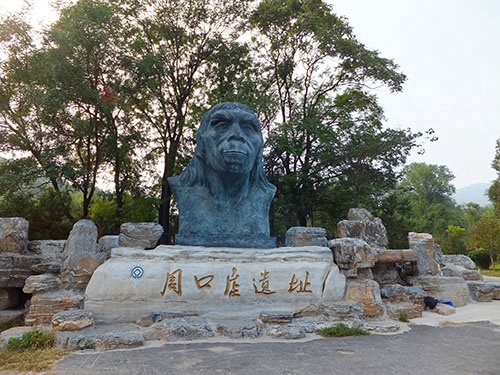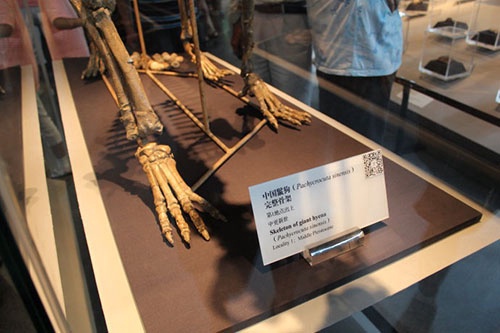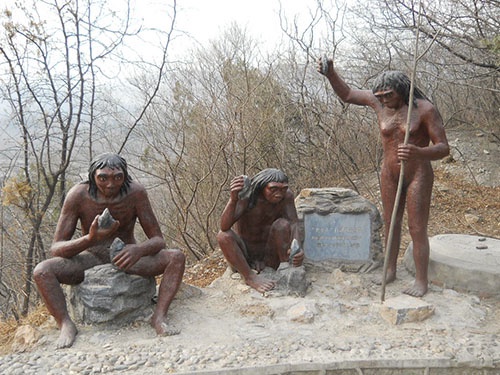
Peking Man Museum, or Zhoukoudian Anthropological Museum, is situated in the village of Zhoukoudian (Choukoutien in Pinyin Chinese, "Zhoukoudian" being to "Choukoutien" as "Peking" is to "Beijing") near Beijing, where the 1921 discovery of Peking Man (Sinanthropus pekinensis), based on the surface find of a molar, created a sensation when it was first discovered, since it was not only the first example of a prehistoric humanoid find in China, but the first such find in all of Asia.

Peking Man was believed to be an example of a "missing link" between ape and man, the notion of a missing link belonging more to the imagination of lay folk than to the scholarly world of science. Further pieces of the Peking Man "puzzle" were found during initial site excavations that were conducted between 1923-1927. Findings in the site include the bone fossil, stone tools, and marks of using fire by these ancient ancestors. These discoveries are solid evidence of the existence of Peking man, a milestone in the history of the study of anthropology.
Peking Man is now considered to belong to the broader genus called Homo erectus ("erect humanoid"), making Peking Man a Homo erectus pekinensis. Peking Man shared this missing-link role with two other specimens: Java Man, found in 1891 on the island of East Java in Indonesia, another Homo erectus with the more specific name of Pithecanthropus erectus ("upright ape-man"), erectus being the genus proper; and Taung Child (Australopithecus africanus), found in 1924 at Taung near the city of Kimberley, in South Africa. Whereas the scientific community was somewhat skeptical of the Java Man finds and their documentation, it unreservedly accepted the scientific value of the Peking Man finds, especially since the excavations during 1923-1927 unearthed more evidence, including more teeth, a lower jaw, and skull fragments. Moreover, during a second set of excavations that took place under the supervision of the Chinese paleontologist, Yang Zhongjian (aka Dr. C.C. Young in Anglo-Saxon circles, and generally renowned as the 'Father of Chinese Vertebrate Paleontology'), and which took place from 1928 until they were abruptly interrupted by invading Japanese forces in 1937, over 200 human fossils from more than 40 individual specimens, including 6 near-complete calottes, or skullcaps, were excavated from the site. All of the year is suitable for your Beijing Water Cube tour. A sunny day is much better.

Address: No. 1 Zhoukoudian Street, Fangshan Distrit, Beijing
How to get there: Bus No. 917 at Tianqiao Bus Station and get off at Zhoukoudian Lukou, then transfer to Fangshan Bus 38 to Yuan Ren Yi Zhi (Peking Man Site). Or take the official tour bus at Tiananmen Square to Zhoukoudian
Telephone: +86 10 69301278
Admission: 30 RMB
Opening Hours: Peak Season: 8:30-16:30 Off-season: 9:00-16:00
Phone: +86 10 69301278
Best Time to Visit: All Year
Recommended Time for a Visit: 2 Hours



